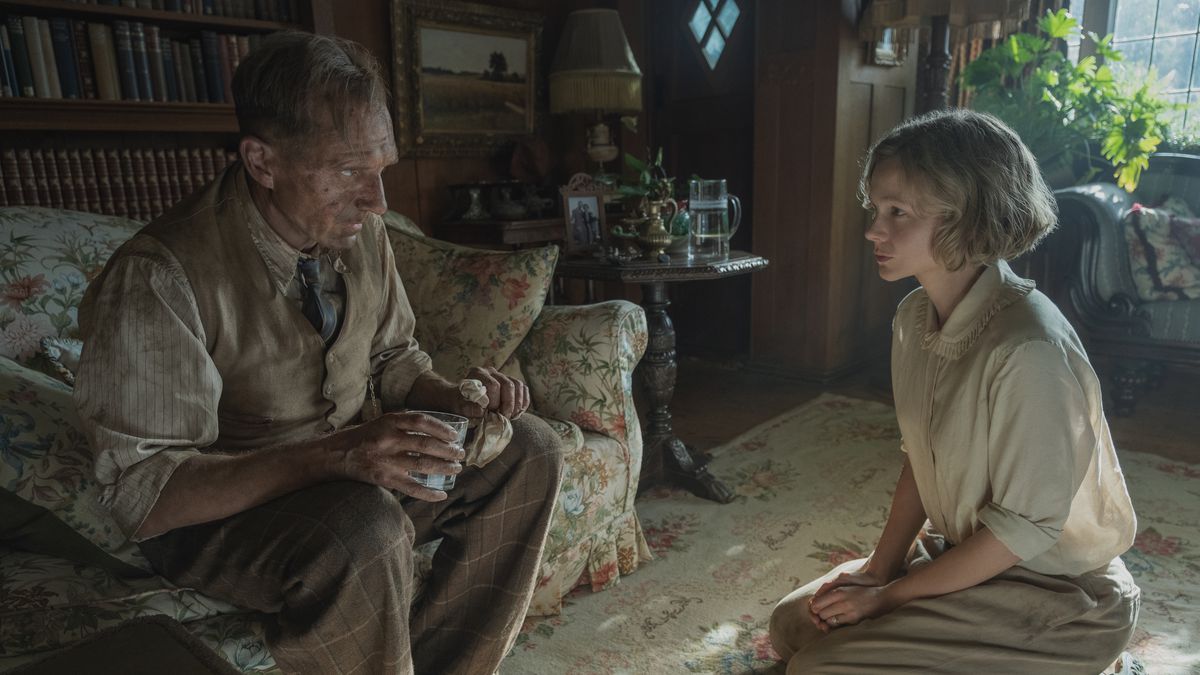

The legendary 16th-century Spanish author Miguel de Cervantes famously said, “For historians ought to be precise, truthful, and quite unprejudiced, and neither interest nor fear, hatred nor affection, should cause them to swerve from the path of truth, whose mother is history, the rival of time, the depository of great actions, the witness of what is past, the example and instruction of the present, the monitor of the future.” The very spirit of Cervantes’ statement was evoked by Basil Brown, a self-taught English archaeologist and astronomer, who in 1939 discovered and excavated the skeleton of an 88-foot Anglo-Saxon ship buried at Sutton Hoo, near Woodbridge, in Suffolk, England. The discovery and the excavation which unearthed a treasure trove of many valuable antiquities is the subject of Simon Stone’s historical drama film ‘The Dig’ which recently released on Netflix, following a limited theatrical release.
Despite being looked upon as an amateur archaeologist by the Cambridge archaeologist Charles Phillips (essayed by Ken Stott) who took control over the excavation once the discovery became known to the British authorities, Brown (played by Ralph Fiennes) remained stuck to his guns that the ship belonged to the much older Anglo-Saxon period as opposed to the general belief that it dated back to the more common Viking era. He finally succeeded in corroborating his estimation after he discovered a Merovingian Tremissis, a small gold coin belonging to the Dark Ages. Unable to control his elation, Phillips proclaimed, “This is Anglo-Saxon. It’s Dark Ages, by Jupiter! Sixth century! This changes everything. These people were not just marauding barterers. They had culture! They had art! They had money!” British Museum curator Sue Brunning described it as “one of the most important archaeological discoveries of all time”.
It all begins when Suffolk landowner Edith Pretty (portrayed by Carey Mulligan) hires Brown to tackle the large burial mounds at her rural estate in Sutton Hoo. Working only with a few assistants from the estate, Brown slowly begins to excavate the more promising of the mounds. One day the trench collapses on him, but he is dug out in time and revived. This changes his outlook and he decides to dig up a mound that initially overlooked owing to his early assessments. And soon he strikes gold (literally). Even though an inquest confirms that Edith Pretty is the owner of the ship and its priceless treasure trove, she decides to donate the Sutton Hoo treasure to the British Museum, requesting that Brown be given recognition for his work. She dies in 1942. A note at the end of the film states that the treasure was kept hidden in the London Underground during WWII and was first exhibited — without any mention of Basil Brown — 9 years after Edith’s death. It’s only recently that was Brown given full credit for his contribution and his name is now displayed permanently alongside Pretty’s at the British Museum.
According to scholars, Rædwald of East Anglia is the most likely person to have been buried in the ship. The site is important in establishing the history of the Anglo-Saxon kingdom of East Anglia and the early Anglo-Saxon period and has illuminated a period that lacks historical documentation, often referred to as the Dark Ages. Interestingly, the discovery of the Anglo-Saxon ship skeleton has prompted many comparisons with the world of the Old English poem ‘Beowulf’ that’s partly set in Götaland in southern Sweden, which has archaeological parallels to some of the finds from Sutton Hoo.
‘The Dig’ is a deliberately-paced, old-fashioned drama that does a wonderful job of bringing us face-to-face with an important chapter of human history. The film has two memorable performances at its core. While the 35-year-old Mulligan essays the part of Edith Pretty (was in her mid-50s during the excavation) with considerable subtlety and conviction, the 53-year-old Nicole Kidman, who was originally supposed to essay the part, would certainly have suited to the part better. But, Mulligan, to her credit, does a fabulous job of bringing Edith Pretty to life. Every time she appears on the screen, we see a stoic-looking woman struggling hard to fight her growing illness. The other memorable performance comes from Ralph Fiennes who is mesmerising as Basil Brown. Fiennes’ name alone is an assurance that you are not going to watch anything worthless. He is always a treat to watch. Every time the English actor steps in front of a motion-picture camera, he doesn’t fail to give a demonstration of his acting pedigree and class. And ‘The Dig’ is no exception. From the very first moment that he appears on the screen, we are convinced that we are looking at a man who has spent years excavating sites. ‘The Dig’ digresses in the moments when it focuses on a redundant romantic subplot involving two secondary characters. But barring that little deviation, it is a compelling historical drama that needs to be watched.